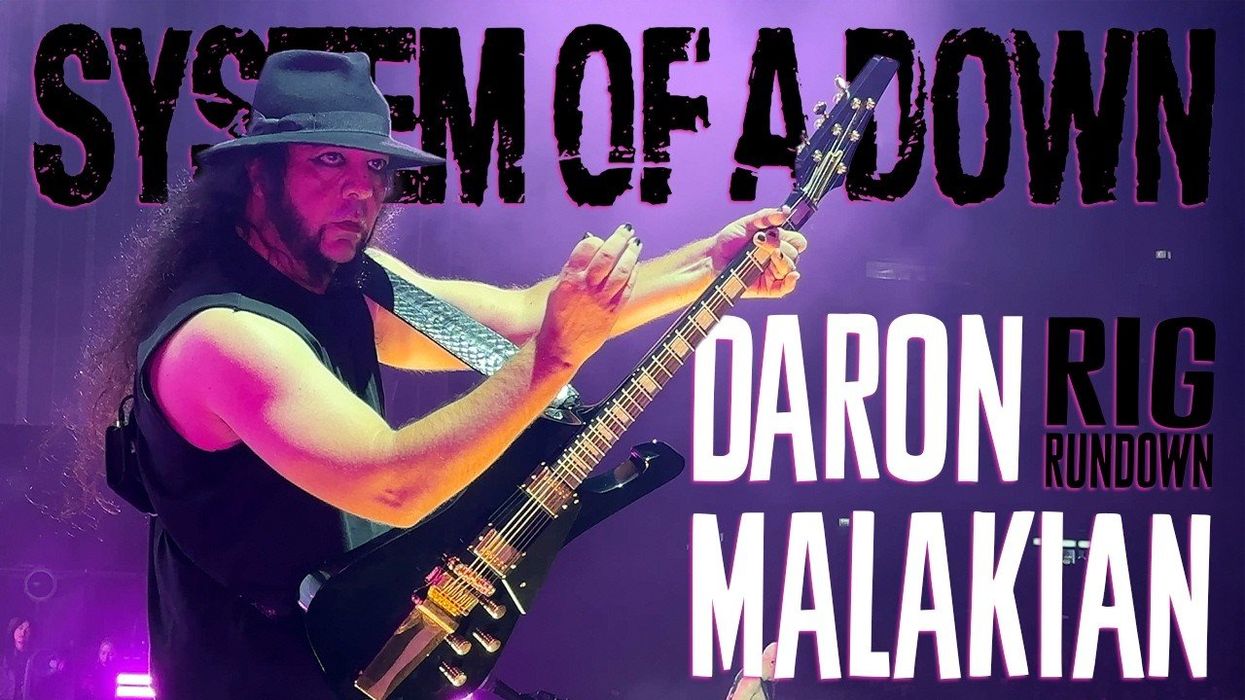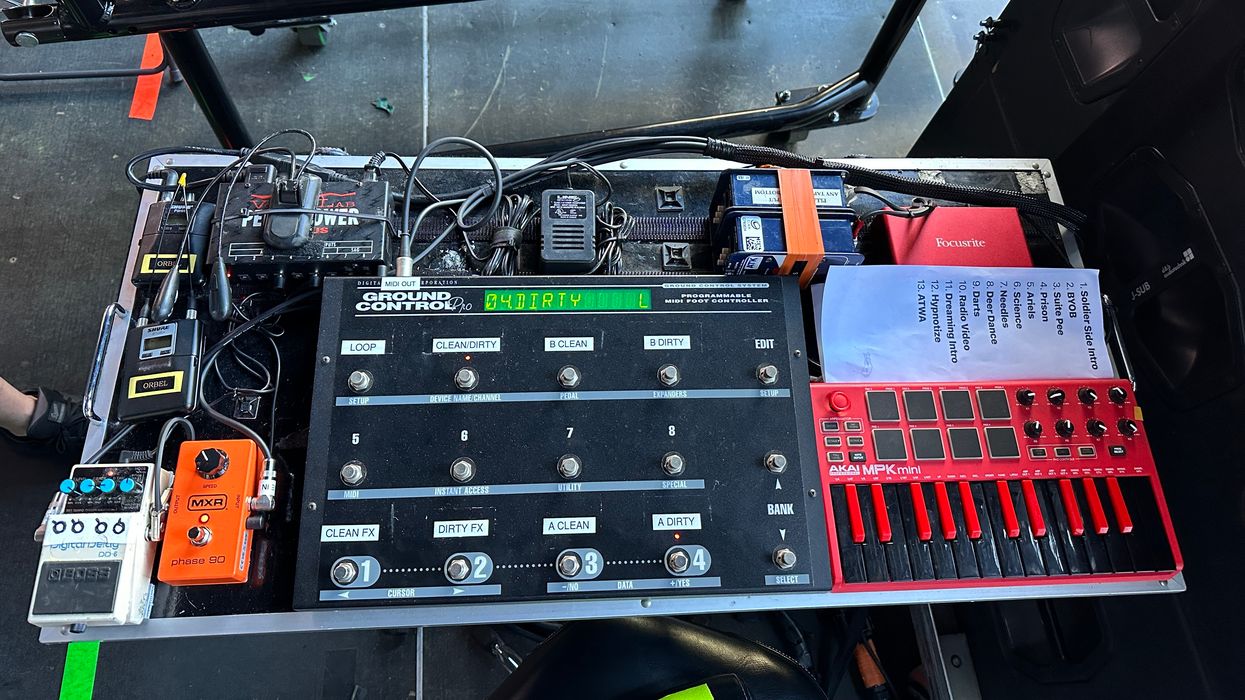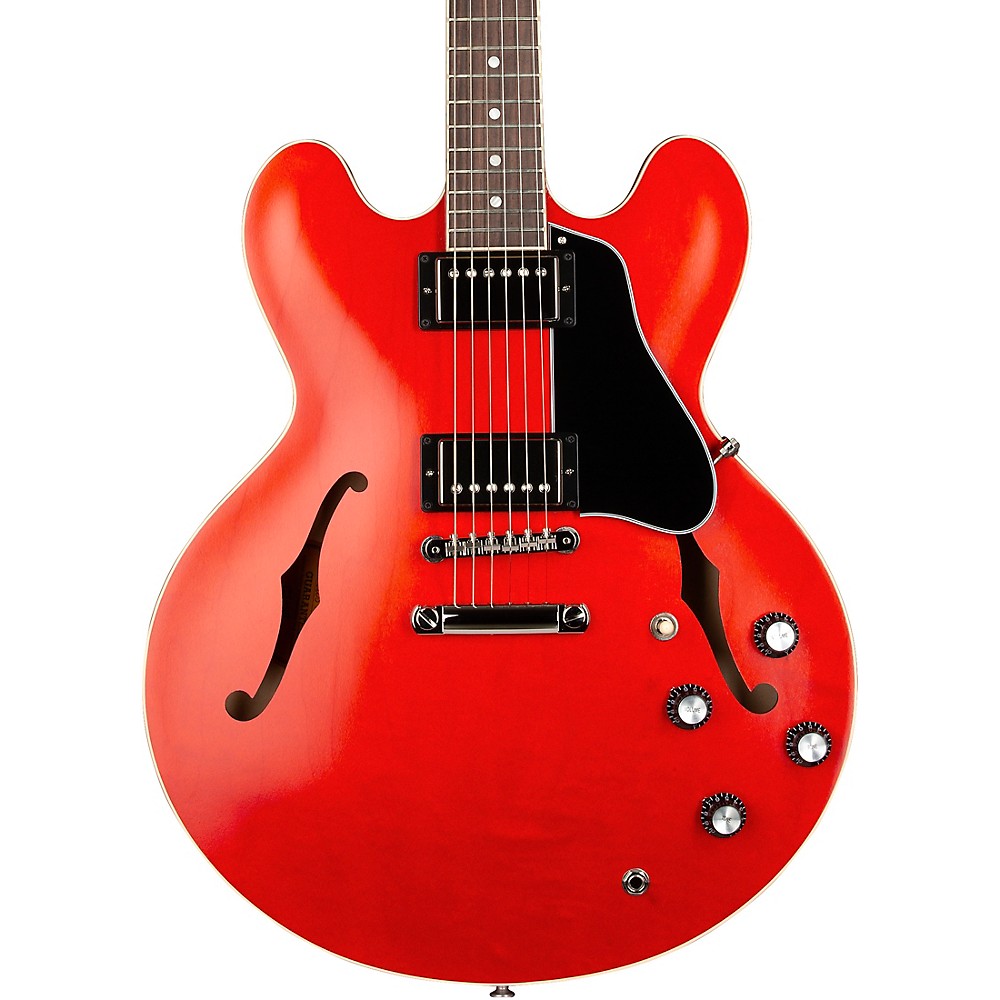The Nashville session and touring guitarist, whose credits include Stone Temple Pilots, Carrie Underwood, and David Crosby, takes PG through his versatile, heavyweight home rig.
Inspired to by play guitar by his 6-stringing father, Shawn Tubbs emerged from the Christian-music scene. By his late teens, he was doing club and session gigs, and became part of The Violet Burning. In 1992, he played with Stone Temple Pilots on an episode of MTV Unplugged, then got deeper in the high-profile Nashville session scene, and began touring with Carrie Underwood. He’s since stopped road-tripping in favor of the studio, where he’s a first-call player and his credits include recent work with David Crosby. The 30-year-veteran guitarist’s current album, Demolition, A Collection of Short Jams, can be heard on SoundCloud, and he’s got a popular YouTube channel, but you can hear him demo is own gear in this Rig Rundown, filmed at his home studio.
Brought to you by D’Addario XPND Pedalboard.
Golden Tone
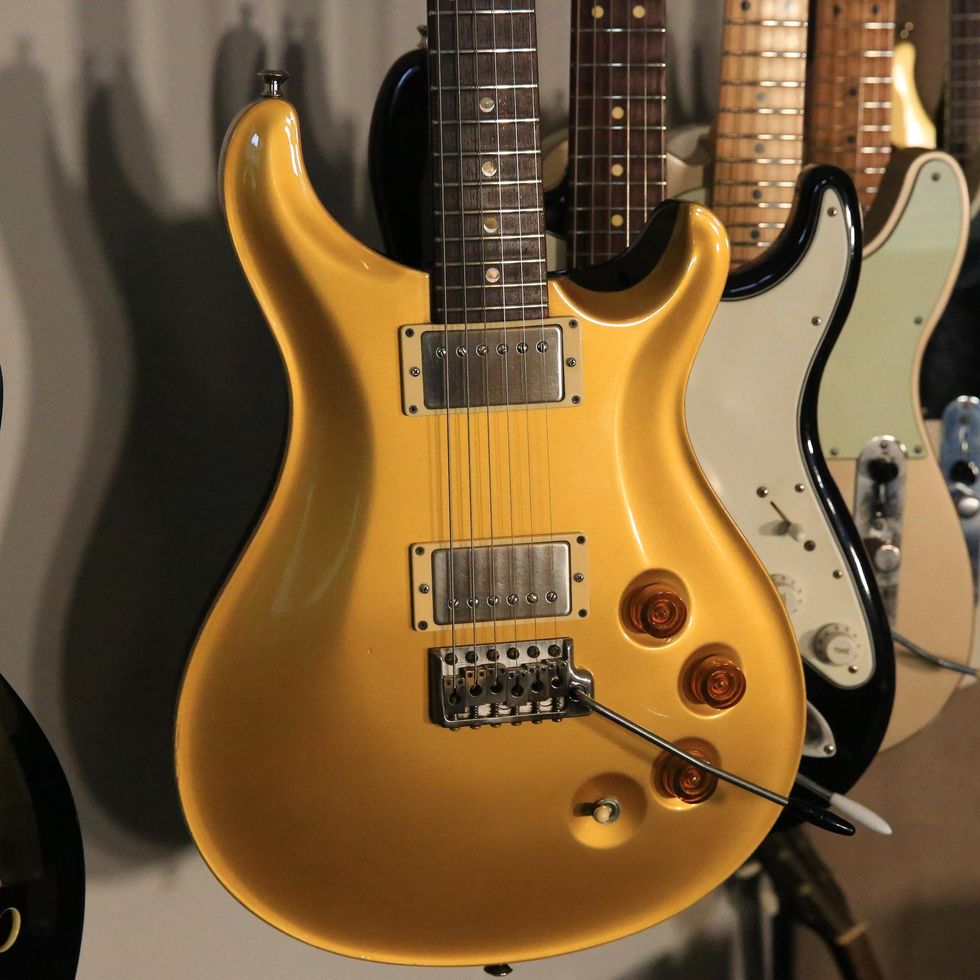
Shawn has an extensive collection of guitars, but we narrowed our focus to the 6-strings he reaches for most often. The first entry is a 2010 PRS DGT, one of the company’s vintage-inclined models that’s all stock. All of his guitars are strung with D’Addario NYXL sets, gauged .010–.046.
Callie Killer
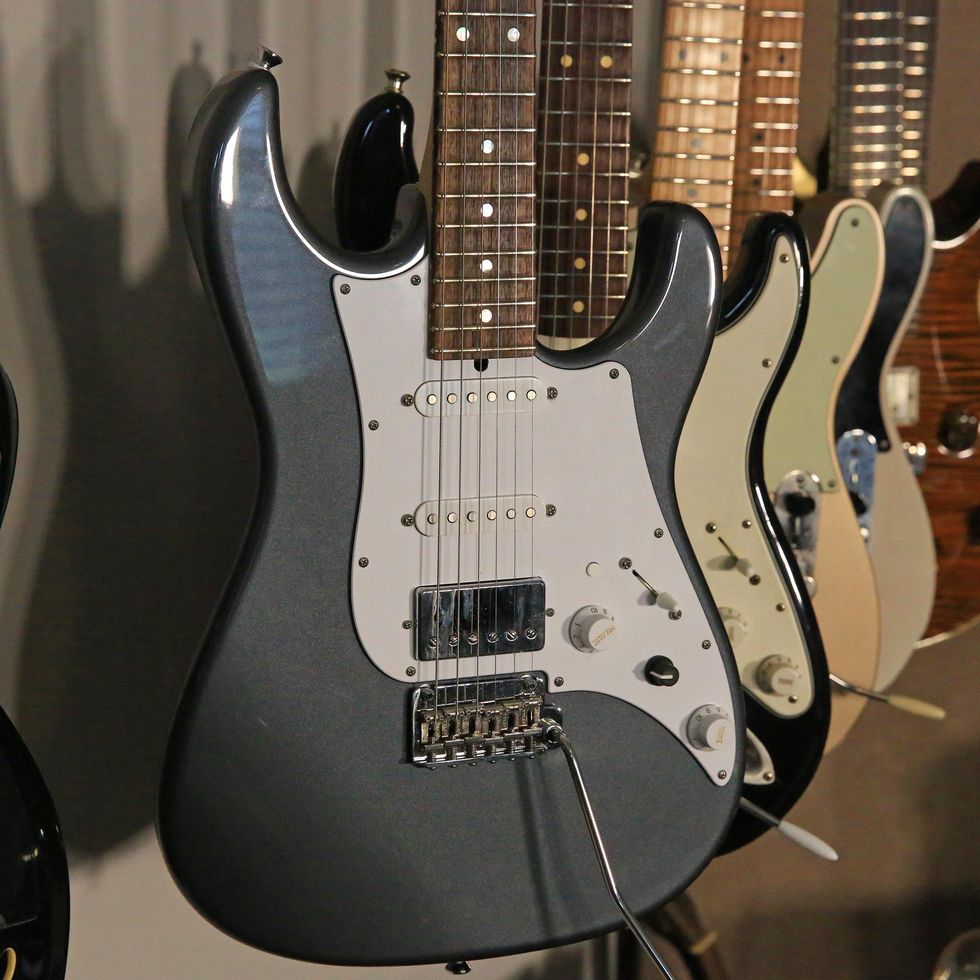
Here’s an S-style designed by elite California builder James Tyler—an SE HSS from 2021. The axe sports JT 2250 Single-Coils and a JT Super Bridge.
Special Topper
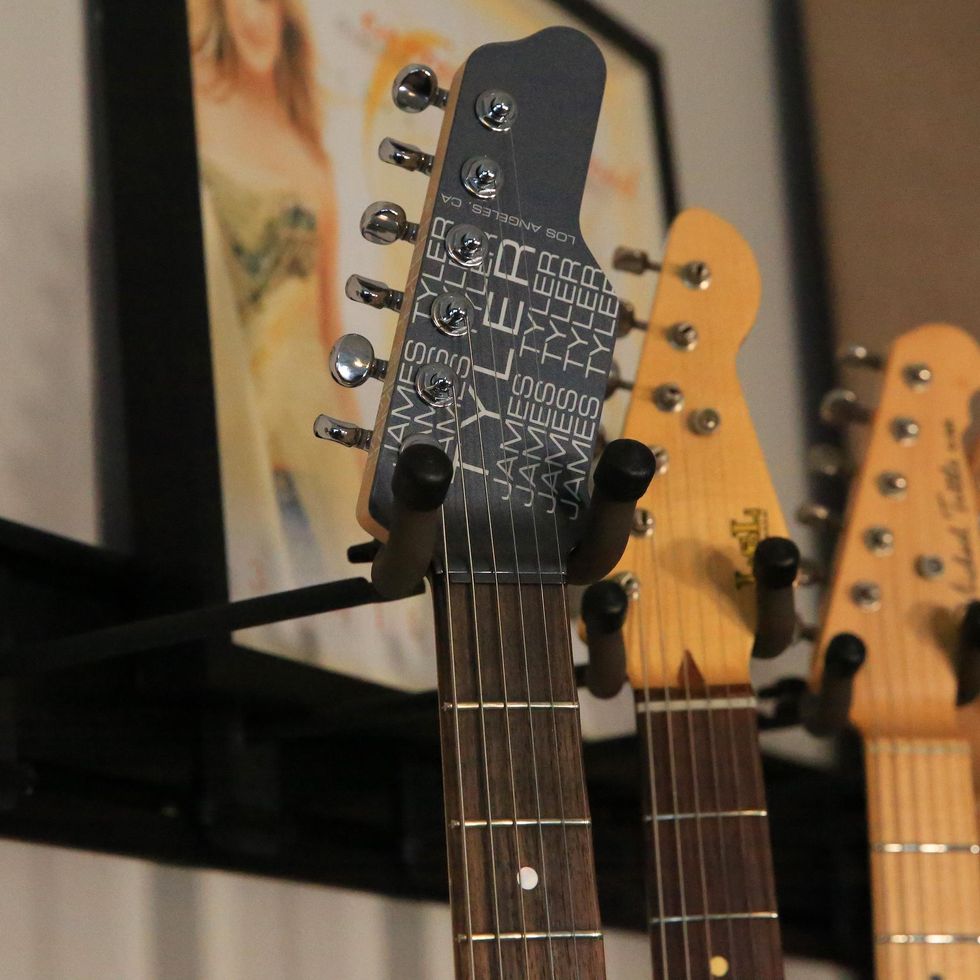
Here’s the ultra-distinctive headstock on the James Tyler SE HSS.
Evolved Paul
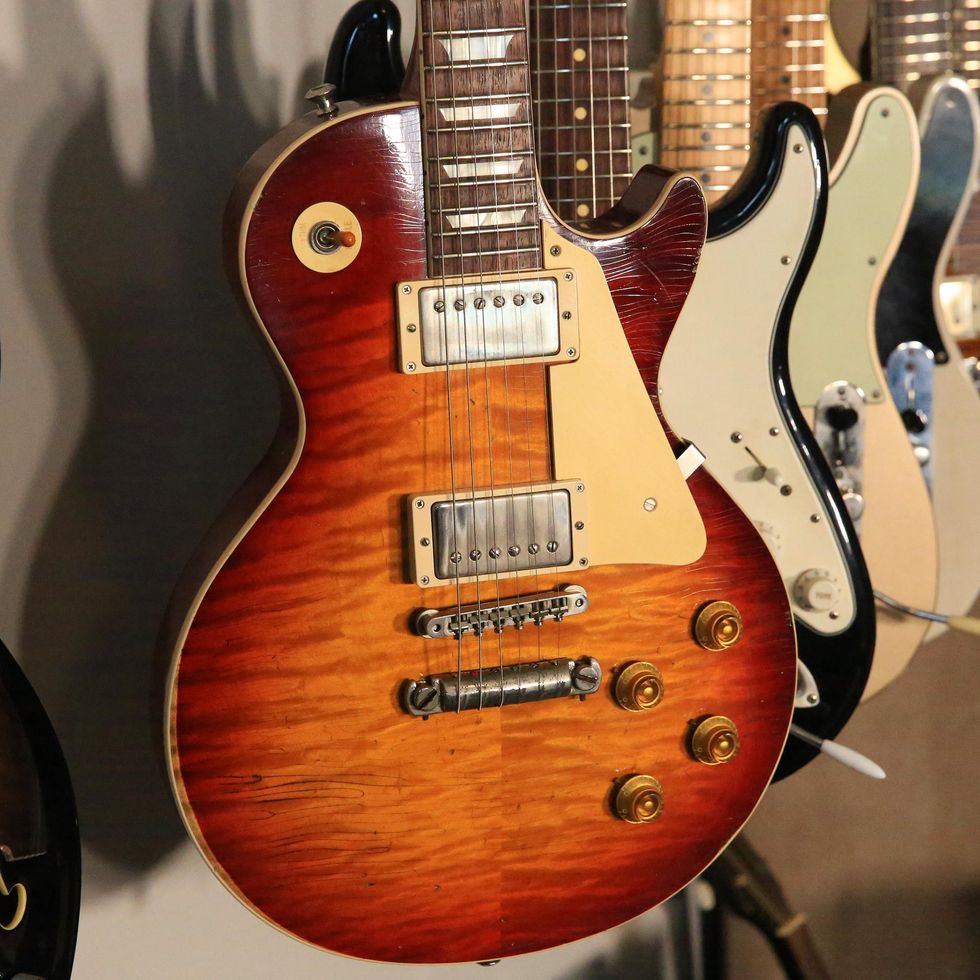
This Gibson Les Paul R9 has been heavily modded but still retains its classic looks. It’s had a complete refinish include a neck reshaping, non-potted Custom Shop pickups, and a ’58 tailpiece.
Grey Duse
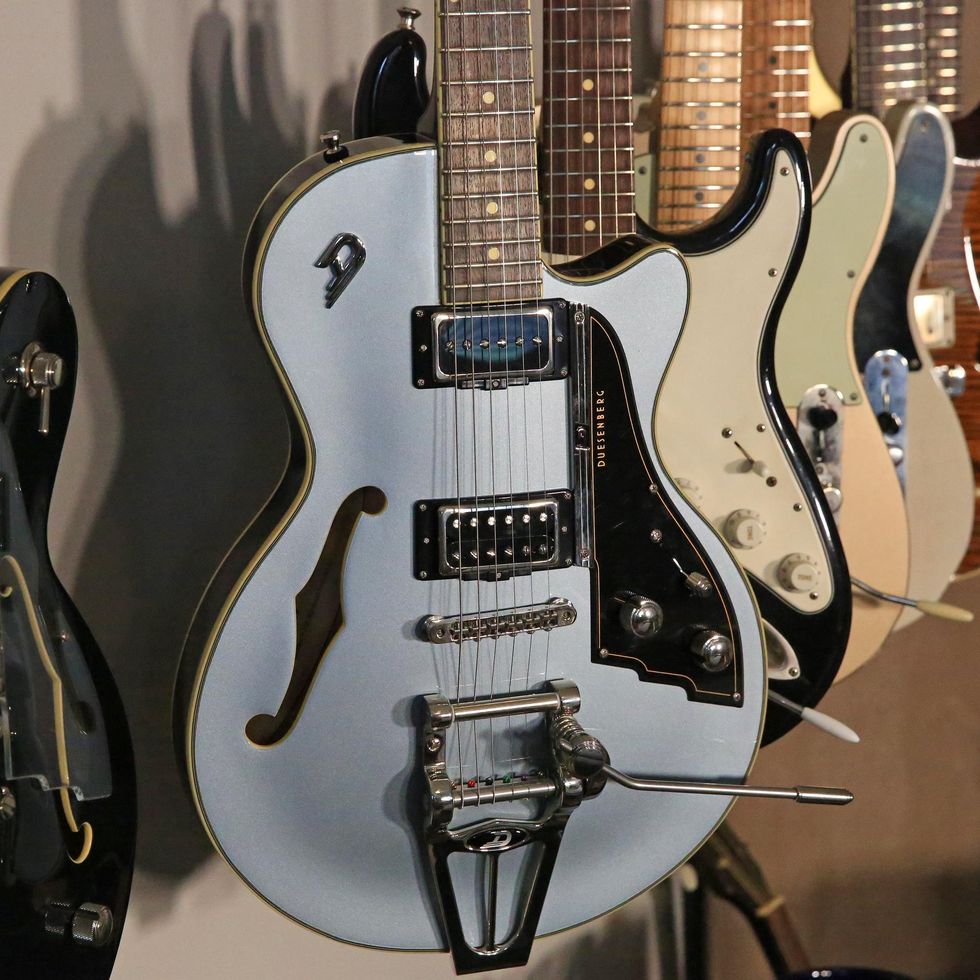
This 2022 Duesenberg Starplayer TV is all-stock, which means it’s a semihollow with a GrandVintage Humbucker and a Domino P-90, a 25 1/2" scale length, and the Dusenberg Diamond Deluxe Tremolo.
S for Shure
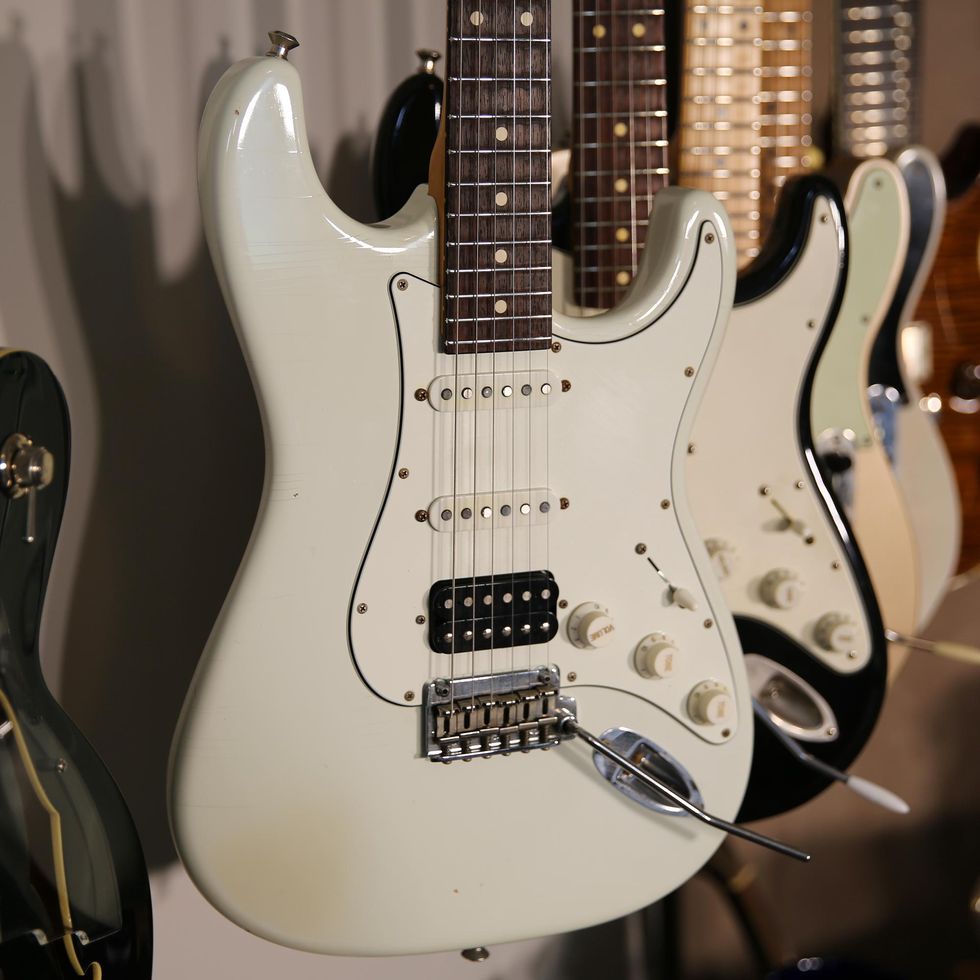
Made in 2011, this Suhr Classic Pro Antique HSS has a 2-piece alder body, Suhr ML Single-Coils, a Suhr SSV bridge pickup, a maple C-profile neck, and a Gotoh bridge—all calculated for vintage feel.
Revv’d Up
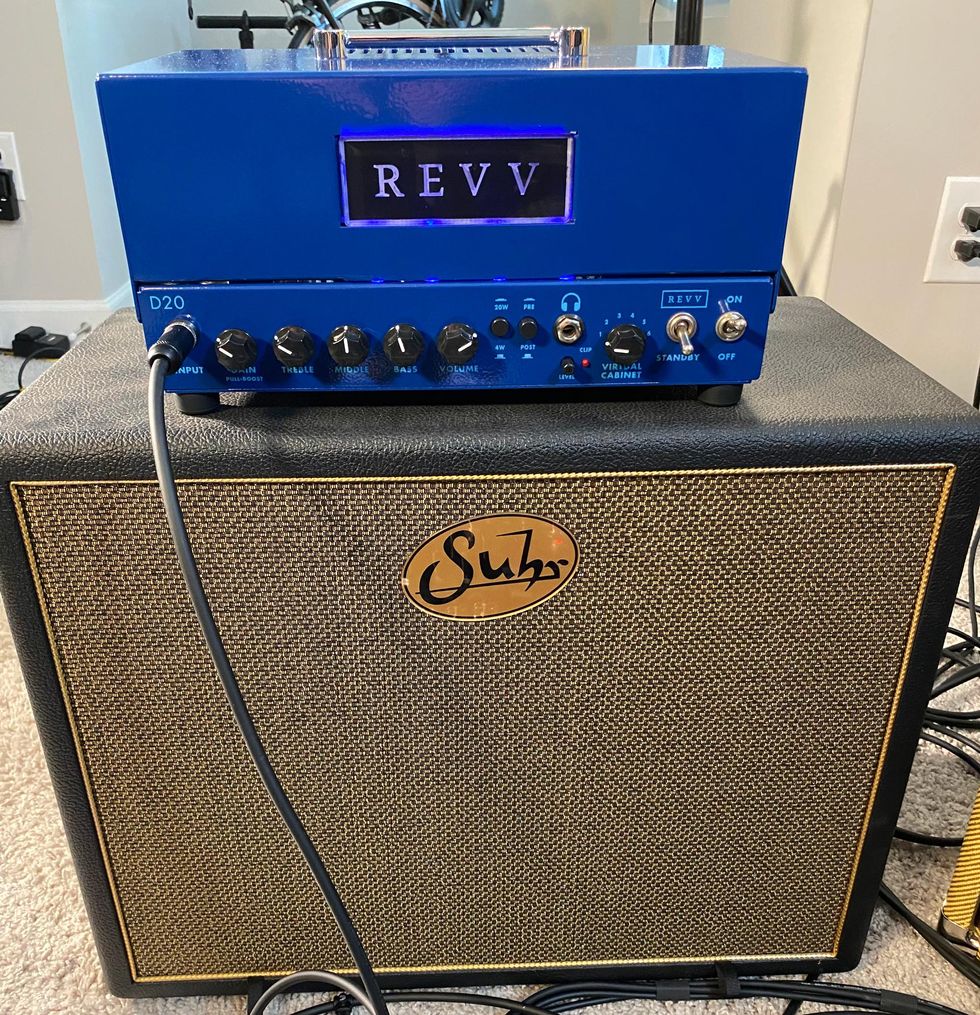
Although Tubbs has a lot of amps and cabinets in his studio, for this Rig Rundown he played through two amps run in stereo. On the left side there’s a Revv D20 (switchable between 20 and 4 watts) with a 6V6 Power Section. Tubbs ran an XLR out via the amp’s embedded Two Notes reactive load box with virtual cab options.
In the Red
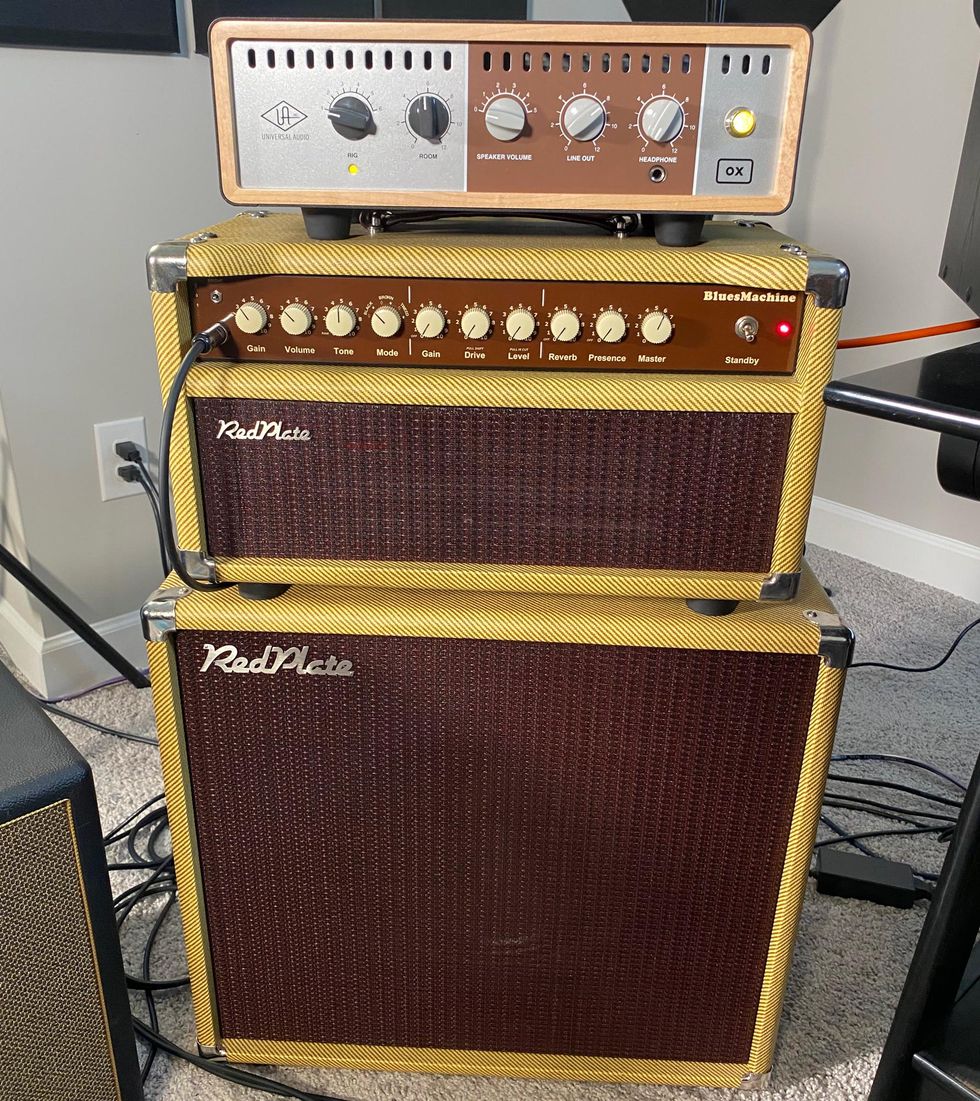
On the right side, there’s a RedPlate Blues Machine 40-watt head with 6L6 Power tubes atop a matched cab. It’s routed to a UA OX Amp Top Box.
Tubbs' Tone Zone
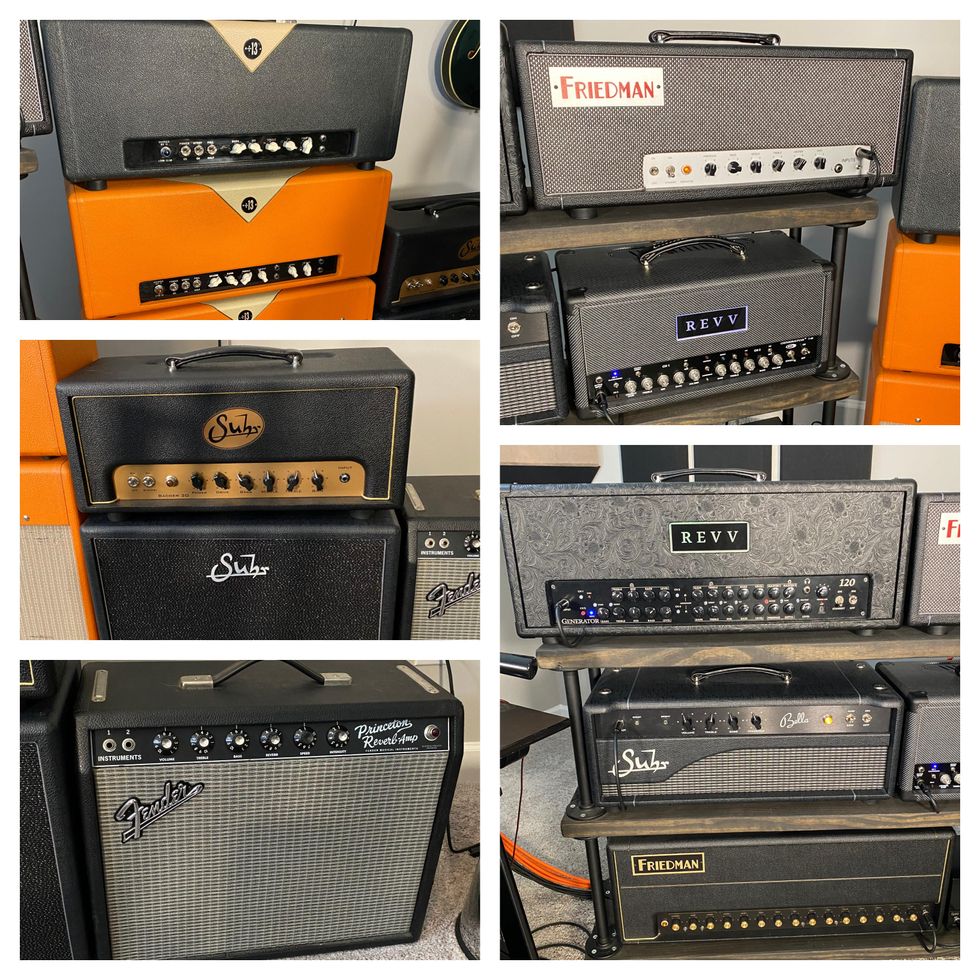
His other amps include a Revv Generator 120, a Friedman Dirty Shirley 40, a Suhr Bella sans reverb, a Friedman BE 100 Deluxe, a Revv G20, a Divided By 13 LDW 17/39 and FTR 37, and a Suhr Badger 30.
Shawn Tubbs' Pedalboard
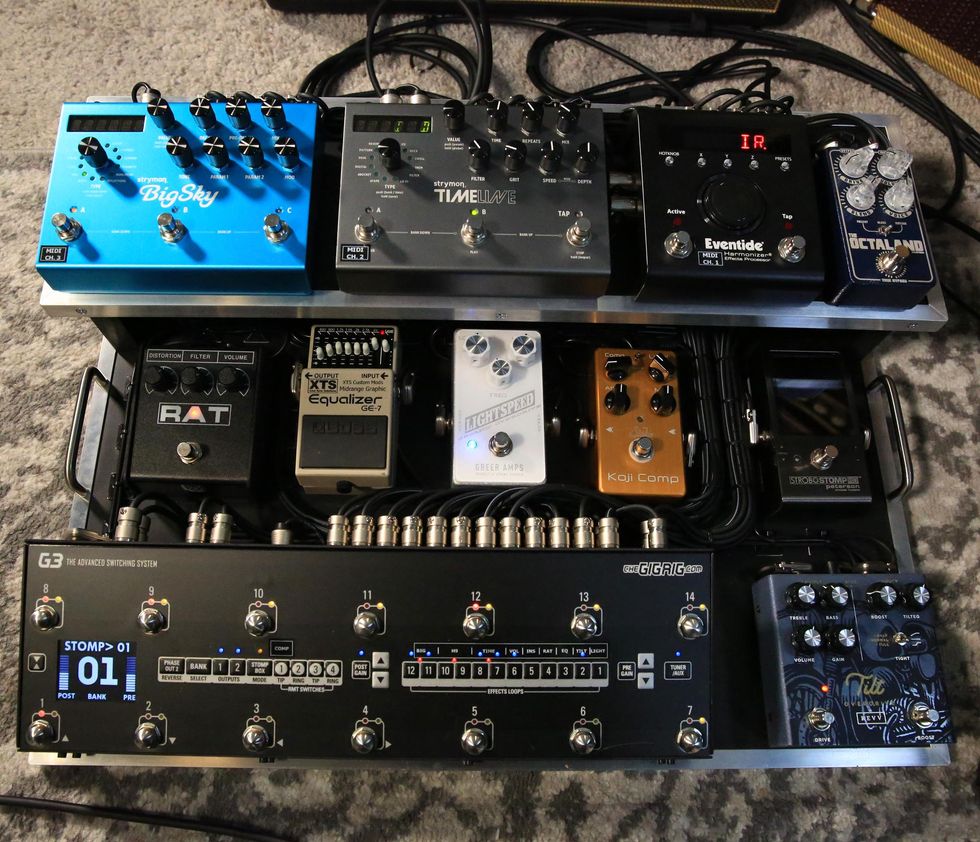
Shawn’s board was built and designed by XAct Tone Solutions in Nashville, whose Barry O’Neal is one of PG’s “State of the Stomp” columnists. Its residents are: a The GigRig G3 switching system, a BigSky and TimeLine by Strymon, an Eventide H9, a KingTone Octaland Fuzz, a Pro Co Rat V2, an XTS-modified Boss GE-7 equalizer, a Greer Lightspeed Organic Overdrive, a Suhr Koji Comp, a Revv Shawn Tubbs Tilt Overdrive, a Lehle Volume Pedal, two Dunlop X(8)s, Strymon Zuma and Ojai Power Supplies, and an XAct Tone custom interface. For a detailed rundown of Shawn’s signal flow and the dozen loop scenes he employs, take careful notes as you watch the rundown!



![Devon Eisenbarger [Katy Perry] Rig Rundown](https://www.premierguitar.com/media-library/youtube.jpg?id=61774583&width=1245&height=700&quality=70&coordinates=0%2C0%2C0%2C0)





















